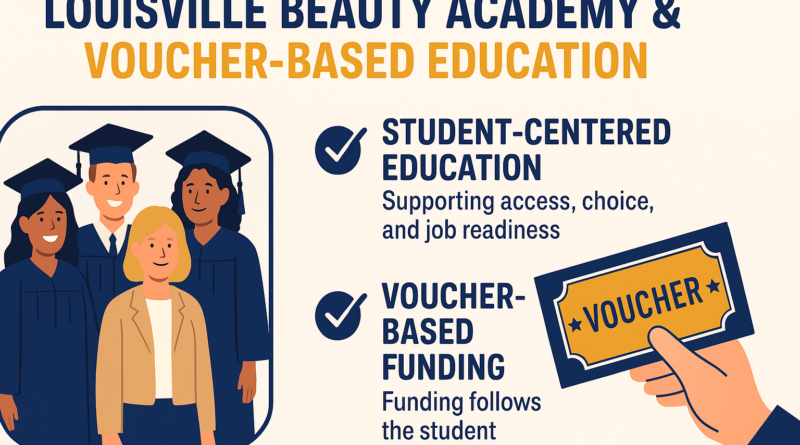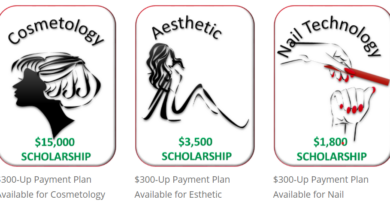Reforming Federal Aid and Accreditation: Lessons from Louisville Beauty Academy
Federal education officials have signaled a new focus on college costs and accreditation. For example, in 2021 the U.S. Department of Education announced it was reviving an enforcement unit to investigate colleges that “abuse the [federal student aid] system”highereddive.com. More recently, an April 2025 executive order criticized existing accreditors as “gatekeepers” that approve low-quality programs and impose ideological litmus tests instead of focusing on student outcomeswhitehouse.govwhitehouse.gov. In response, the Department has moved to expand accreditation options and increase competition, stating it will no longer “micro-manage” institutions’ choice of accreditor and will allow new accrediting agencies to enter the marketed.gov. Simultaneously, Congress and reform advocates are debating ways to restructure federal aid (see below) and scrutinizing rising college prices and debt. In sum, both the Department of Education and policymakers are actively examining the federal student‐aid system, accreditation agencies, and higher‐ed costs as part of broader reform efforts.
Key proposals under discussion include shifting federal aid toward student-driven vouchers or savings accounts. Rather than funneling Pell Grants and loans through Title IV rules, some policymakers advocate issuing aid directly to students (like an education savings account or “Backpack Scholarship”) that can be spent at any state-authorized school. Under this model, students – not institutions – decide where to spend federal funds, akin to K–12 charter or ESA programs. Proponents argue this would increase competition and force colleges to cut prices. Critics counter that unlike K–12 systems, higher‐ed already has rigorous oversight. As the Center for American Progress notes, Title IV aid currently requires a “triad” of approval: an institution must be state-authorized, accredited by a recognized agency, and subject to ED audits or finesamericanprogress.org. In other words, giving students vouchers “to use at any state-approved institution” would bypass the private accreditation layer. Under such proposals, only the state’s authorization of a school would matter, not its access to federal aid. (To date no enacted federal law fully implements vouchers for college, but the idea is frequently floated in reform circles.)
Title IV Institutions vs. Non-Title-IV Schools
Cost and debt. Accredited (Title IV) colleges have seen dramatic tuition hikes, often financed by federal grants and loans. The White House has highlighted that many accredited programs are expensive yet deliver poor returns: roughly 25% of bachelor’s and over 40% of master’s programs yield negative ROI, leaving students with heavy debt and low earningswhitehouse.gov. For example, beauty and cosmetology programs – which are often Title IV–eligible – can leave graduates with loans far exceeding their post‐training pay. A 2020 study by the Institute for Justice found cosmetology students averaged over $7,100 in federal loans, even though typical starting salaries were low; in short, “cosmetology education seems to offer a low return on investment”ij.org. Similarly, Brookings Institution researchers report that short-term vocational certificate programs (300–600 hours, often run by for-profit schools) have very low post-college earnings (about $24,000/year on average)brookings.edu, although their debt burdens are relatively modest simply because loans are small. In contrast, non-Title-IV providers like Louisville Beauty Academy avoid federal loans entirely and charge far less. LBA’s own model emphasizes a “debt-conscious” approach: it advertises tuition around $6,000–$8,000 for full certification programs, with extensive discounts and scholarships to help students pay out-of-pocketvietbaolouisville.com. These rates are a fraction of the $15,000–$25,000 typical at many other cosmetology schools (which often rely on Pell and loans). As one local report notes, LBA’s strategy “dramatically enhances return on investment”: with costs “significantly lower than the national average,” graduates can recoup their schooling expenses in months rather than grappling with years of loan paymentsvietbaolouisville.com.
Accountability and outcomes. Accredited colleges are subject to federal oversight: they undergo periodic program reviews, submit audited finances, and face default-rate benchmarks under laws like Gainful Employment. Indeed, participating in Title IV triggers numerous checks. The Center for American Progress details this “full accountability process”: a school must be approved by its state and an ED-recognized accreditor (each accreditor in turn meets ~90 ED rules), and then ED audits its use of aid, tracks its loan default rates, and can cut off funding if legal or fiscal standards failamericanprogress.org. This multi-layer system is intended to protect students and taxpayers. By contrast, non-Title-IV schools like LBA are regulated primarily by the state. LBA is Kentucky State Board–licensed and -accredited, meaning it meets state board standards for cosmetology programs. While it lacks federal audit requirements, it is accountable to state regulators and its customers. Anecdotally, LBA emphasizes student success on the state licensing exam and a “student-centered” culture; publicly, LBA’s materials boast high on-time graduation and job-placement rates (typical of small trade schools) and emphasize returning students to the workforce quickly. This local oversight and market accountability stands in sharp contrast to many high-debt colleges that receive federal aid and frequently leave students underemployed or defaulting.
“Free Money” Critique: FAFSA and Family Engagement
Many critics argue that FAFSA grants and loans distort incentives. Because federal aid feels like “free money,” students and families may be less price-conscious. One analysis from Cato Institute observes that government grants create an “illusion of free money”, encouraging recipients to assume costs are borne elsewherecato.org. In practice, this can reduce families’ incentive to shop around for cheaper programs or save for education. Put differently, when Pell Grants and subsidized loans are widely available, the effort of applying and borrowing may crowd out the gravity of paying for college. Families might focus on maximizing aid eligibility rather than comparing programs’ value. In contrast, in a system like LBA’s – where students pay tuition directly or via small private loans – parents and students arguably stay more engaged in financial decisions. Every dollar spent has to be earned or borrowed responsibly, so there is a stronger “skin in the game.” Proponents of shifting to a voucher/ESA model contend that requiring students to directly allocate funds will restore this responsibility. (Opponents counter that some need-based subsidies are vital, but even studies sympathetic to aid note that excessive borrowing can harm students’ long-term finances.)
Cutting Accreditation Bureaucracy: State Control and Competition
As concern grows over college costs and controls, many reform proposals call for shrinking or restructuring the accreditation system. Supporters of reform point out that accreditors have often expanded far beyond their original mission. In the recent Executive Order, accreditors were accused of focusing on ideological standards (like DEI metrics) rather than core quality measureswhitehouse.gov. The order tasks the Education Secretary with overhauling accreditation: speeding up approval of new agencies, preventing politicized criteria, and allowing institutions to change accreditors more easilyed.gov. Congressional allies (e.g. H.R. 2516, the “Accreditation for College Excellence Act”) similarly aim to ban “political litmus tests” by accreditors.
In practical terms, reformers argue that accreditation adds unnecessary bureaucracy. Currently, a college that wants federal aid must navigate both state approval and private accreditation. As CAP explains, “each college that receives federal financial aid must be authorized or approved by the state” and also accredited by an ED-recognized agencyamericanprogress.org. If accreditation requirements are dropped, then a state’s licensing or approval alone would suffice to ensure program quality. States already have an interest in weeding out diploma mills; for example, Kentucky’s cosmetology board enforces minimum curriculum and instructor standards. Proponents say a state-driven model, combined with market competition, would make colleges accountable: schools would compete on price and outcomes to attract tuition-paying students. Without the layer of accreditor rules, schools like LBA could innovate more freely (e.g. compressing hours or offering online supplements) as long as they meet state educational outcomes.
Critics of eliminating accreditation worry about lower standards, but advocates counter that the federal accreditation regime is not sacrosanct. The recent ED press release frames accreditation agents as gatekeepers that “hold up innovative providers” and, by having more accrediting bodies, seeks to foster competition among accreditorsed.gov. Under a student-voucher system, accreditors would no longer be needed as arbiters of federal aid. Instead, state regulators (who already license vocational schools, community colleges, etc.) and parent-customer feedback would provide accountability. This radical proposal – putting “power and responsibility” on students, families and schools – is already being trialed in sectors like finance and vocational training, and LBA exemplifies it in higher ed.
Louisville Beauty Academy: A Pioneer of Affordable, Student-Centered Education
Louisville Beauty Academy (LBA) operates entirely outside the Title IV system, yet claims strong outcomes and minimal student debt. Founded in Louisville, KY, LBA is fully licensed by the Kentucky State Board of Cosmetology, but it does not take federal aid. Instead, it offers extremely low tuition (around $6,000–$8,000 for full programs) and provides extensive discounts and payment plans. For example, LBA advertises nail technician training for about $3,800 (originally $8,325) and a full cosmetology course for roughly $6,250 (down from $27,000) under its scholarship conditionsvietbaolouisville.com. These cuts make LBA’s rates among the lowest nationwide. The school promotes debt-free graduation – students are encouraged to save or pay-as-they-go – and flexible scheduling so they can work while training.
This model has drawn praise. A community news article describes LBA as “making strides” against the national trend of expensive beauty schools, calling it a “beacon of hope” by providing “the most affordable beauty education in Kentucky”vietbaolouisville.com. The same report notes that LBA’s graduates can realistically recoup their education costs in a few months of work, versus facing “tens of thousands” in loans at other schoolsvietbaolouisville.com. In effect, LBA puts financial responsibility directly on students and families. If students don’t finish or pay tuition, the loss is theirs alone (not the taxpayer’s), which the academy argues aligns incentives properly. Indeed, LBA’s CEO publicly champions a “student-centered” culture where learners are treated like customers with real skin in the game.
While LBA is small (serving hundreds of students each year), its success suggests a proof of concept: high-quality vocational training without federal subsidies or high debt. Graduates earn state licenses and enter the workforce directly. The school touts high licensure exam pass rates and job placement within Louisville’s beauty industry (though independent data are limited). Importantly, LBA’s existence demonstrates that educational quality and access need not rely on federal aid: a state-licensed school can attract students through low prices, transparent outcomes, and community reputation. In this sense, LBA functions as a pilot of the voucher model – it shows how Pell-like funds (in this case forgone) could be shifted to students without collapsing the school. Policymakers and educators can study LBA’s model to design competitive, low-cost programs in other fields (e.g. technical trades, healthcare training) that operate outside Title IV.
Conclusion and Policy Recommendations
In an era of $1.7 trillion in student debt and stagnant academic outcomes, there is bipartisan interest in overhauling how we finance and accredit higher education. Federal agencies and lawmakers are already scrutinizing accreditation and considering alternatives like student vouchers. Kentucky’s Louisville Beauty Academy exemplifies the kind of innovation that these reforms seek: a state-authorized, market-driven school offering real skills at rock-bottom cost, without relying on federal grants or loans. LBA’s approach encourages student responsibility and keeps families closely engaged in paying tuition.
Policy recommendations: We suggest that federal policy pivot toward student-directed funding and state oversight. Specifically: (1) Pilot student aid portability. Begin a demonstration program allowing a portion of Pell Grants or state higher-ed funds to follow students to any state-licensed program (including non-Title-IV career schools). (2) Restructure accreditation. Phase out federal recognition of accrediting bodies and allow the DOE to approve any school meeting state criteria. States and professional boards would accredit specialized programs (cosmetology, trades, etc.), while general state approval would suffice for broad funding eligibility. (3) Encourage low-tuition models. Support the development of high-quality, low-cost institutions through grants or prizes; for example, partner with LBA to create best-practice toolkits or expand its model to other states and industries. (4) Increase cost transparency. Require all higher-ed institutions (Title IV or not) to publish true out-of-pocket costs and outcomes, so students can make informed choices.
By shifting from a system of federal entitlements to education savings accounts or vouchers, students gain real choice, and schools must earn their funding by keeping costs low and outcomes high. Louisville Beauty Academy shows this is possible: quality beauty training, strong community ties, and negligible student debt – all outside the federal aid bureaucracy. In revisiting accreditation and aid, policymakers should study LBA’s results. A flexible, student-centered approach to funding and oversight – as LBA embodies – can spur innovation, empower families, and deliver better value for both students and taxpayerswhitehouse.govvietbaolouisville.com.



